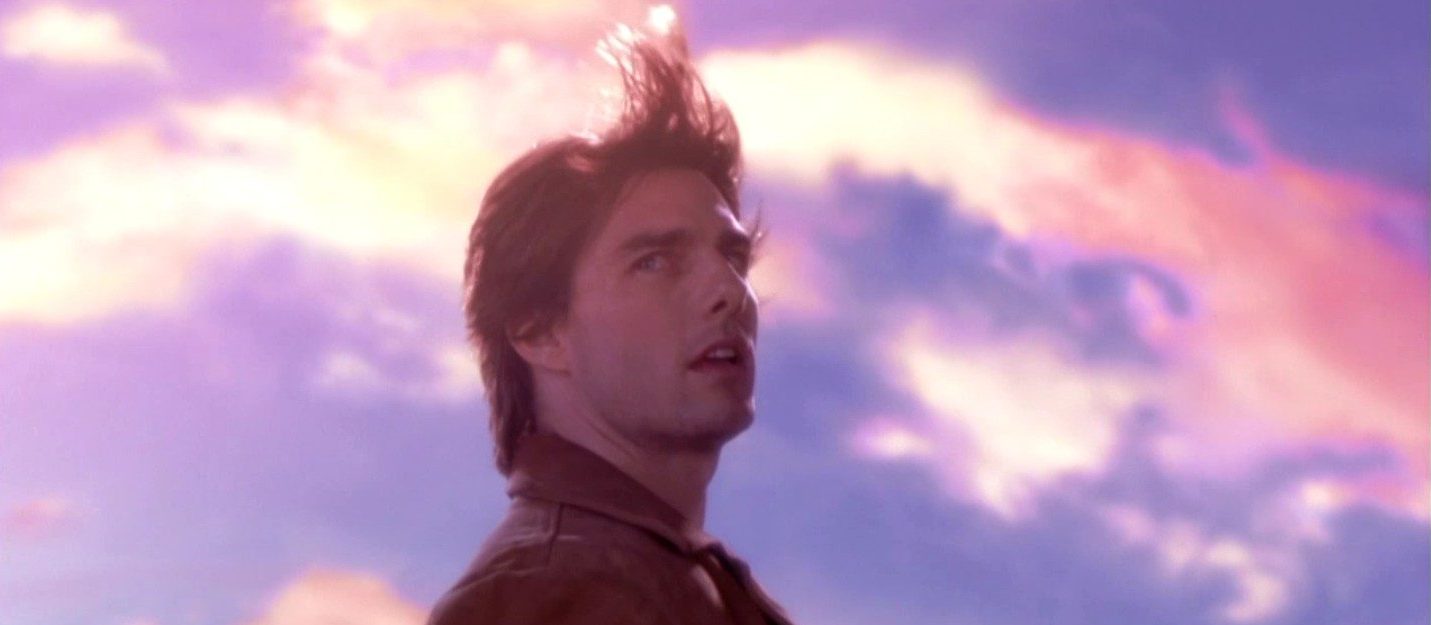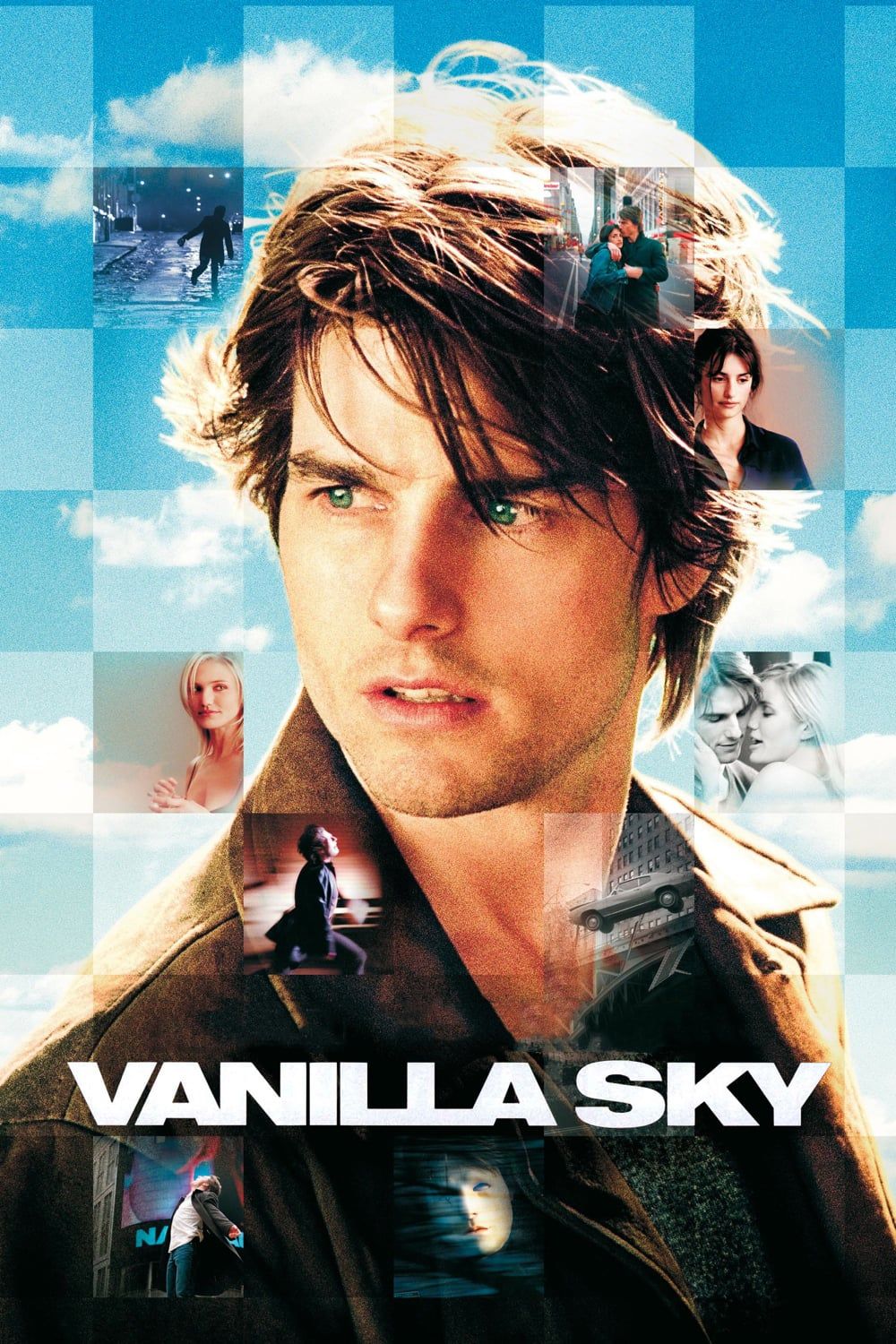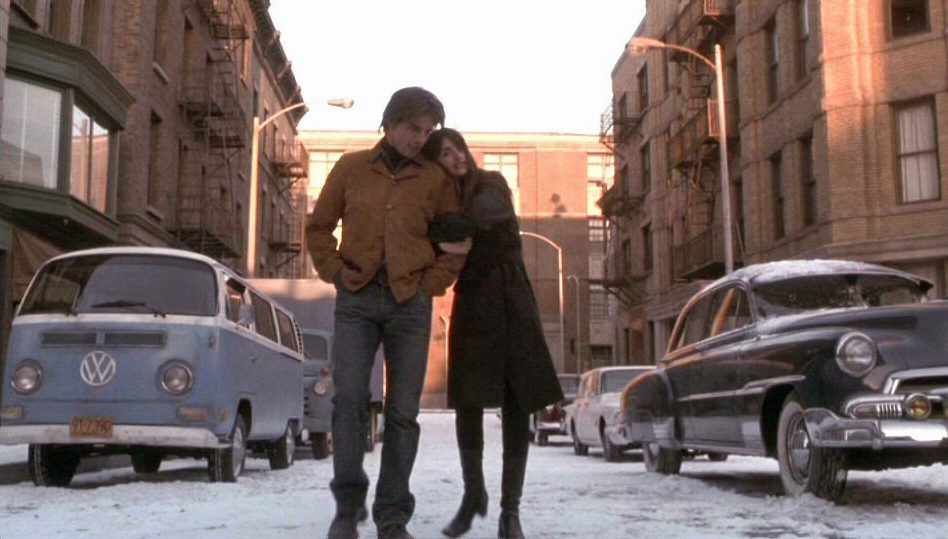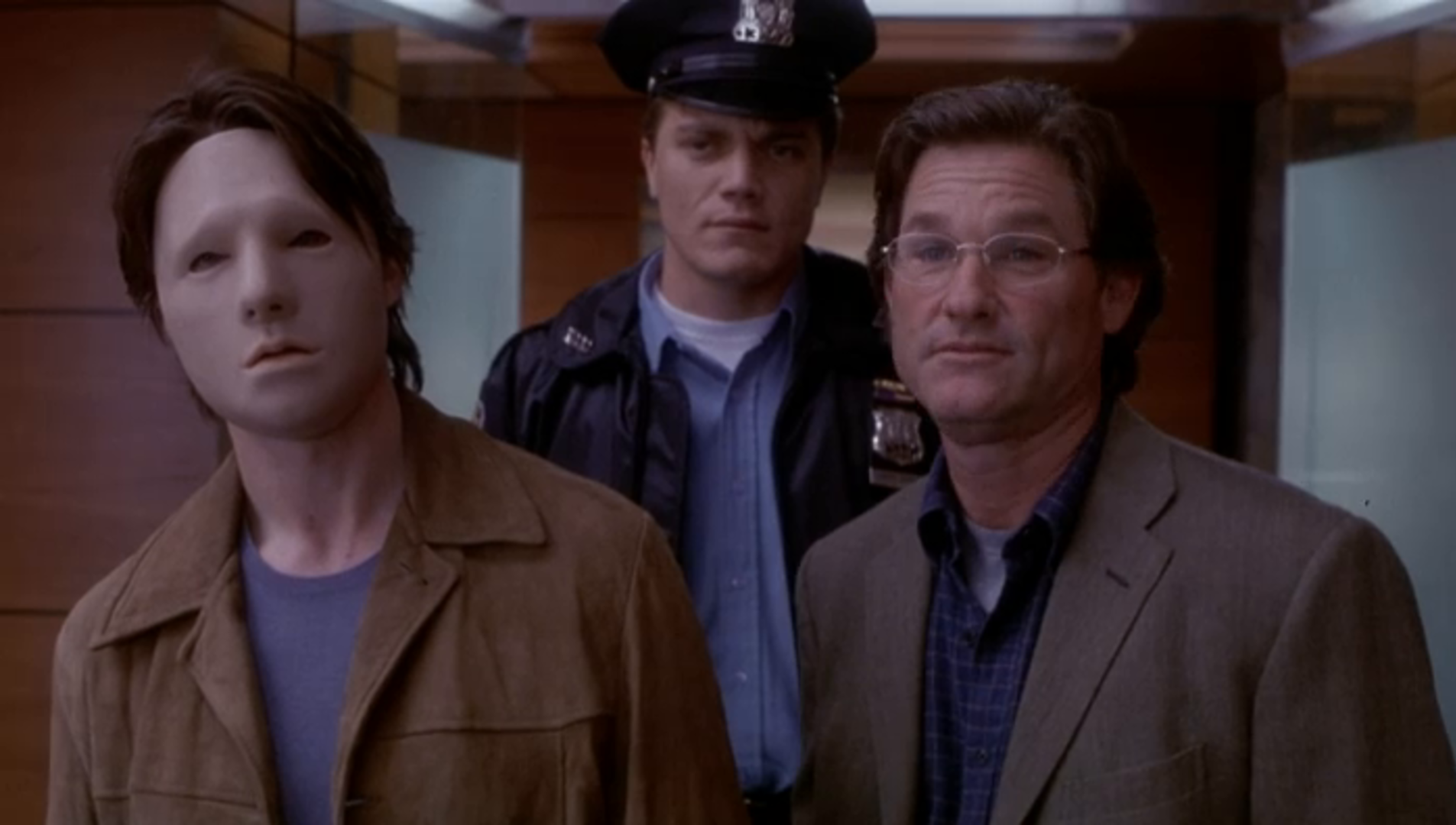

“My dreams are a cruel joke.”
Director Cameron Crowe has likened his genre-bending Vanilla Sky to the Beatles’ Sgt. Pepper’s Lonely Hearts Club Band—particularly the psychedelic collage of pop culture iconography on the album’s cover. His other reference point is the same band’s musique concrète found sound experiment ‘Revolution 9’ from the White Album. These comparisons are apt as the film is pieced together with an associative eye, suggesting connections and deeper meanings through the simple act of juxtaposition. The rangy screenplay and whirlwind editing style help create conjectural bridges between past and present, waking and dreaming, physical reality and imagination, pop culture fantasies and everyday life. As a result, the film abounds with moments of synchronicity both intentional and coincidental. For instance, consider that it opens on the building where John Lennon lived and was murdered and ends with a little ditty written and performed by Paul McCartney.
It’s at its best when it is grasping at these transcendental threads. Late in the film, the main character, David Aames (Tom Cruise), suspecting that he’s been stuck in a comatose lucid dream for decades, takes a literal leap of faith and sees his life flash before his eyes. A brisk montage flashes dozens of split-second clips and images onto the screen: old cartoons, children’s picture books, black-and-white sitcoms, oil paintings, arthouse films, seminal album covers, musical performances (I believe the clip that’s lodged in my mind’s eye is Pete Townsend sliding across a stage on his knees). Amongst these media touchstones are old pets, departed parents, family vacations to Disneyland, home videos from the personal archives of both Crowe and Cruise, shots from Crowe’s Oscar-winning Almost Famous, an “alternate ending” of Vanilla Sky itself, as well as characters from the main narrative: David’s love interest Sofia (Penélope Cruz), his best friend Brian (Jason Lee), and his lawyer (Timothy Spall).

While the mystical dot-connecting is at its most intoxicating here, ending as it does with a toddler Tom Cruise swimming in a lake with his mother, Vanilla Sky is vibrating with metatextual playfulness throughout its runtime. Steven Spielberg makes a cameo appearance at a birthday party (Crowe would return the favor in Minority Report). David and Sofia recreate the cover of The Freewheelin’ Bob Dylan. Cameron Diaz, who plays David’s popstar side chick Julie, is featured on the soundtrack when her character puts her own CD into a car stereo. An episode of The Twilight Zone playing in the background bears remarkable similarities to the film’s plot. Posters for Breathless and Jules and Jim in David’s apartment predict the editing style of a key sequence. Perhaps most notably, Cruz reprises a role she had already played in Alejandro Amenábar’s Open Your Eyes, which served as the basis for Crowe’s “remix.”
With these little breadcrumbs strewn all over the place, and a narrative that is deliberately shifty and impossible to pin down, Vanilla Sky is likely to have different meanings for different people. It speaks to the individual’s unique relationship with their personal history, how our favorite memories meld with our favorite music and create beautiful if inaccurate scenes from our lives that we replay in our minds, and the way the idols of our youth often prove formative in unexpected ways. As we grow and change and find ourselves in different life circumstances, so Vanilla Sky will meet us in new places.

Beneath this mad swirl of enjoyable weirdness, though, we find an erratic frame story that doesn’t prove quite worthy of the screenplay’s lofty ambitions. Ping ponging from rom-com to sci-fi/fantasy to body horror to psychological thriller to murder mystery, it quickly becomes overwhelmed and weighed down by its conflicting aims to deliver a conventionally understandable story and mesmerize the audience with its singular scope. The premise, for what it’s worth, concerns the charmed life of bohemian billionaire playboy David Aames. He experiences love at first sight when he meets Sofia at a party, which causes his plaything Julie to finally crack and drive the both of them off a bridge in an attempted murder-suicide. She dies (though not before delivering the film’s funniest line as the car gathers speed), while David survives. But he’s a changed man—physically, mentally, and spiritually. Gone are his good looks and witty charm. Now he’s a withdrawn loner who wears a prosthetic mask that covers his disfigured face and makes him look more than a little like Michael Myers. When he finally works up the courage to approach Sofia, he gets disgustingly drunk at a club, insults both her and his gentleman best friend, and passes out drunk on a sidewalk. At this point, the film begins detaching from reality in ways that are better to experience than dissect—though Kurt Russell’s court-appointed shrink gives it his best shot. David controls other people with his thoughts, his scars disappear and reappear, characters swap roles, a cryogenics agency enters the picture—it’s a real witches’ brew of wild ideas.
Jagged edges,1 loose ends, and various interpretations aside, the most stunning quality on tap here is the way that Crowe cuts through his non-linear lucid dream storyline with moments that provoke deep melancholy—not just the usual gloom that comes from experiencing a bleak tale, but that abiding sense of sweet sadness that accompanies the wistful contemplation of the passage of time, the death of loved ones, and the finitude of our own lives. That these moments are achieved primarily through soundtrack selection, curation of non-diegetic inserts, and editing is quite the achievement. Vanilla Sky is not a perfect movie. Its flaws are readily apparent—the screenplay might cheat a little bit, there are probably too many twists. But to throw so much at the wall and have most of it stick is still remarkable.
1. I think it’s important to note that some of the elements that I initially found off putting—particularly the way that David’s perfect life and trite romantic pursuit of Sofia feel entirely superficial when set against the portions of the film that try on other genres—can be explained away once the plot opens up to explain the artifice of those earlier scenes.